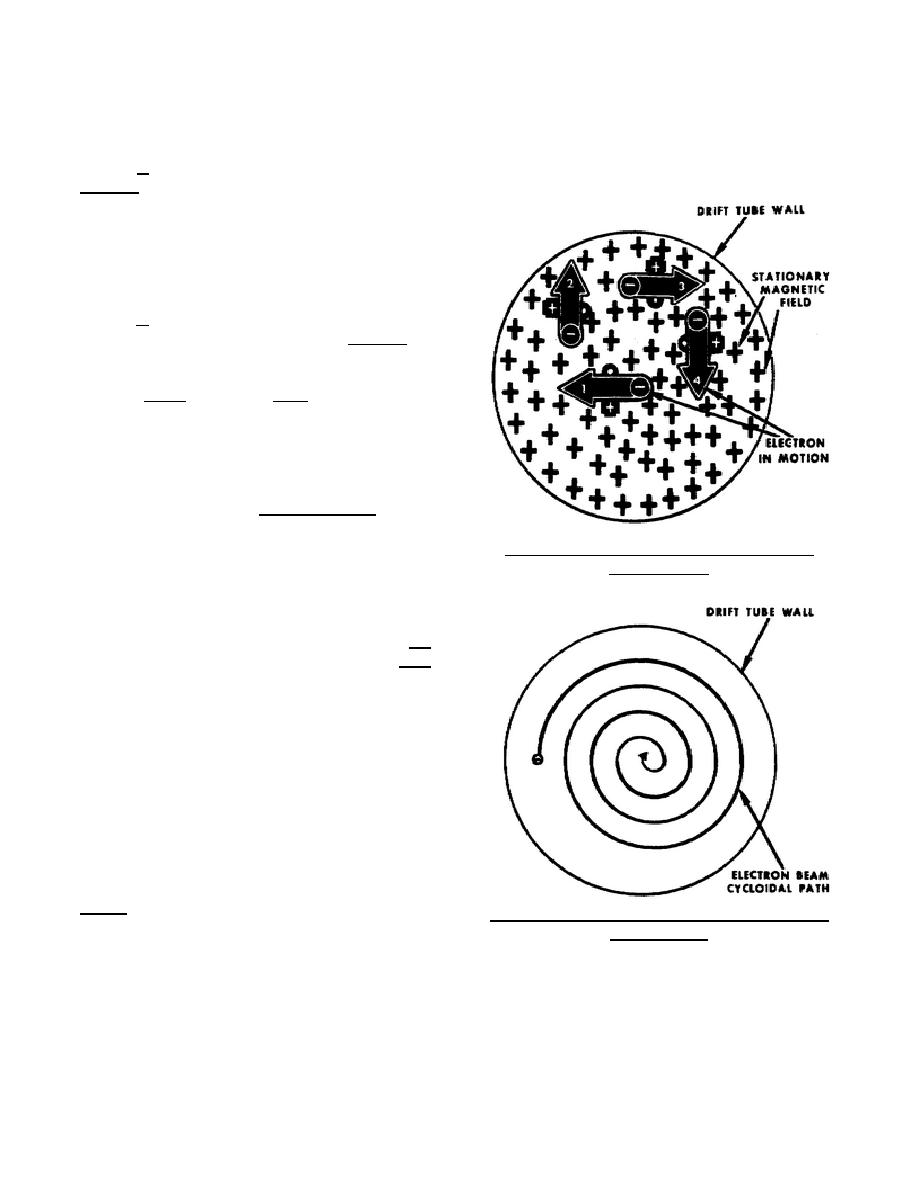
1-50.
CYCLOTRON EFFECT CAUSED BY
MAGNETIC DEFLECTION
a. First, assume that you are at the
collector end of the drift tube (fig 54). Assume,
also, that you can see the three things represented in
the figure: the drift tube wall; the plus (+) sign
symbols designating the tail end of stationary
magnetic field lines; and, arrows representing an
electron moving in four different directions.
b. Because the electron is in motion, it,
too, creates magnetic field lines that encircles its
path. Interaction between the electron's magnetic
field lines and the stationary magnetic field lines
causes a strong field and a weak field on opposite
sides of the electron's path. The strong field is the
result of the electron's magnetic field lines
reenforcing the stationary magnetic field lines. The
weak field is the result of the electron's magnetic
field lines opposing the stationary magnetic field
lines. The electron is always deflected in the
direction of the weak field.
Figure 54. Electron interaction with stationary
(1) At position one, the electron moves
magnetic field.
to the left and away from the drift tube axis. By the
left-hand rule, the electron generates magnetic field
lines in the direction indicated by the small white dot
(.) and plus (+) sign. The plus (+) designates the tail
end of the flu line and the dot (.) designates the head
end. Therefore, the stronger field is in the plus (+)
position of the electrons' path, and the weaker field
is at the dot (.) position. The electron moves in the
direction of the weaker field toward position two.
(2) At position two, the same thing
happens but now the electron moves toward position
3. It keeps moving in the direction shown.
(3) Because of the direction of the
stationary magnetic lines, the electron's cycloidal
motion is clockwise (from your viewing position). It
always returns to the drift tube axis.
Figure 55. Drift tube's end view of electron beam's
cycloidal path.
344 L1
51



 Previous Page
Previous Page
